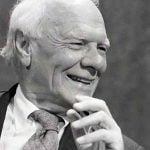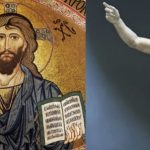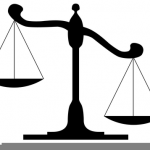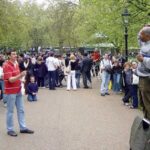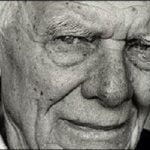A review of Anti-Americanism: Critiques at Home and Abroad, 1965-1990. By Paul Hollander.
Oxford University Press, 1992.
In 1981 Paul Hollander published his very influential Political Pilgrims, a book which chronicled the journeys of Western intellectuals to Marxist countries who returned with glowing reports of Marxist triumphs and criticisms of Western achievements. Hollander pin-pointed the naivety and credulity of such Westerners, and documented this “liberal death-wish”, to use Muggeridge’s phrase. The book correctly described the double standards of left /liberalism: the denigration of pluralism and democracy at home coupled with the praise of tyranny and dictatorship abroad.
In Anti-Americanism, Hollander continues this theme, focusing on a nagging and irrational phenomenon. He is quick to point out that there is a place for justified critiques of the United States, which must be distinguished from the disease of anti-Americanism, which he characterises as “a particular mindset, an attitude of distaste, aversion, or intense hostility the roots of which May be found in matters unrelated to the actual qualities or attributes of American society or the foreign policies of the United States. In short, . . . anti-Americanism refers to a negative predisposition, a type of bias which is to varying degrees unfounded.”
The sources of such hostility are many: “envy, resentment, dogmatic leftism, simple-minded anti-capitalism or mindless utopianism” as well as more understandable concerns, such as unhappiness about living in a secular, individualistic and increasingly meaningless modern society.
But has not the collapse of communism diminished anti-Americanism, or taken some of the wind out of it? Hardly, says Hollander. Indeed, “many social critics at home now contrast improvements in the Soviet Union with what they consider the stubborn resistance to desirable change in the United States”. As the book’s subtitle indicates, Hollander studies both critiques from abroad, and hostility at home. He rightly observes that “no foreign critic has ever discovered ills of American society that had not been noted before by its natives”. Indeed, his discussions of homegrown discontent make for more fascinating reading than that of the foreign criticisms. Especially revealing are the chapters on the churches, the mass media, and higher education.
A classic example of American self-loathing can be gleaned from the chapter entitled “The Pilgrimage to Nicaragua”. It is well known how American intellectuals and members of the New Class fell over one another in their attempts to visit the revolutionary mecca of Nicaragua. But Hollander provides even more fascinating details of such “political tourism”.
In 1985 for example, some 100,000 tourists visited the country, with almost half coming from America. Church groups, teachers, college students, social workers and politicians flocked to Nicaragua to express solidarity with their “oppressed” brethren and to denounce the great Satan, America.
Hollywood was especially well represented in such pilgrimages. At an anti-inaugural celebration to President Bush’s swearing in, actor and singer Kris Kristofferson wrote a ballad to the Sandinistas which included these memorable lines: “Sanavnistaaah! You have lived up to your name … May your spirit never die! Hold a candle to the darkness! You’re the keeper of the flame!”
Sandinistas became demigods in the eyes of disenchanted Americans, and cults of personalities arose. Vanity Fair gushed over Daniel Ortega’s wife this way: “Her charm is the charm of the revolution peopled by the young, the brave, and the good-looking … halfway between La Pasionaria and Bianca Jagger”. At a 1983 visit to Hollywood Mrs Ortega held an audience of sympathisers (including Warren Beatty, Gary Hart and Jane Fonda) spellbound as she described the beauty of the revolution.
The praise heaped on the Sandinista leadership, despite their all-too apparent shortcomings, is well-documented by Hollander. So too is the blindness to the inequalities and sufferings of the ordinary people which characterised the American sympathisers.
The chapter on higher education is another well-documented expose of anti-Americanism. The “political correctness” movement, as expressed in “multicultural” and “cultural diversity” studies, is thoroughly covered. Hollander surveys the transformation of American higher education since the 1960s, noting that the institutions of higher education have become “the major resources or reservoirs of the adversary culture, the setting in which its values and beliefs are most frequently elaborated and displayed in the most unqualified form”. The result is a hostility toward American society combined with an aversion toward Western culture as a whole, the manifestations of which are becoming all too familiar. The rash of women’s studies, gay studies, Black studies, African studies, Third World studies, etc. seems endless.
Suffice it to say that the grounds for anti-Americanism will remain fertile for some time to come. Says Hollander: “The United States is likely to remain a symbolic scapegoat both for trends and developments which can be associated with it, and for which it bears responsibility as the major force for modernity in recent history, and also for the kind of alienation that emerges from the murkier depth of personal discontents and the refusal to come to terms with the imperfections and conflicts of the world, human nature, and social existence.”
[814 words]
